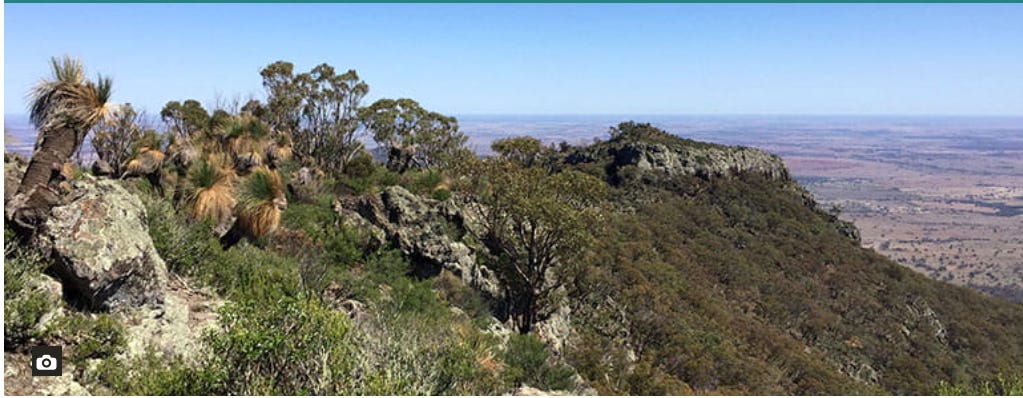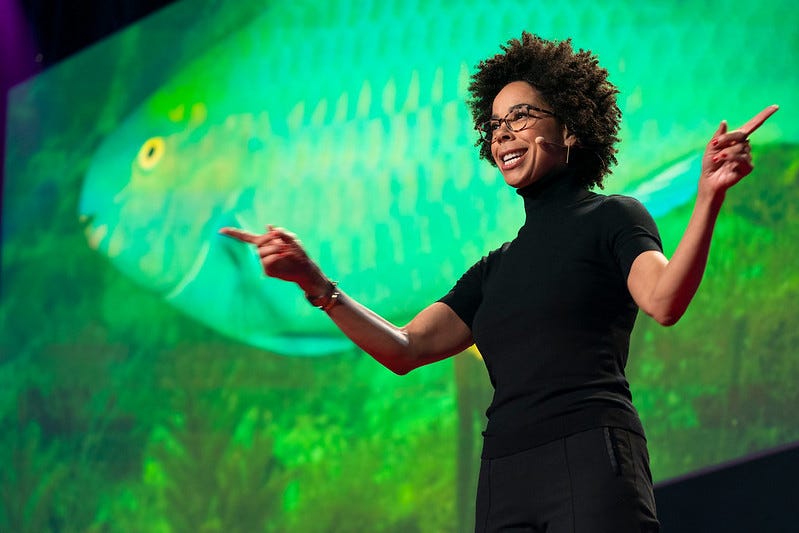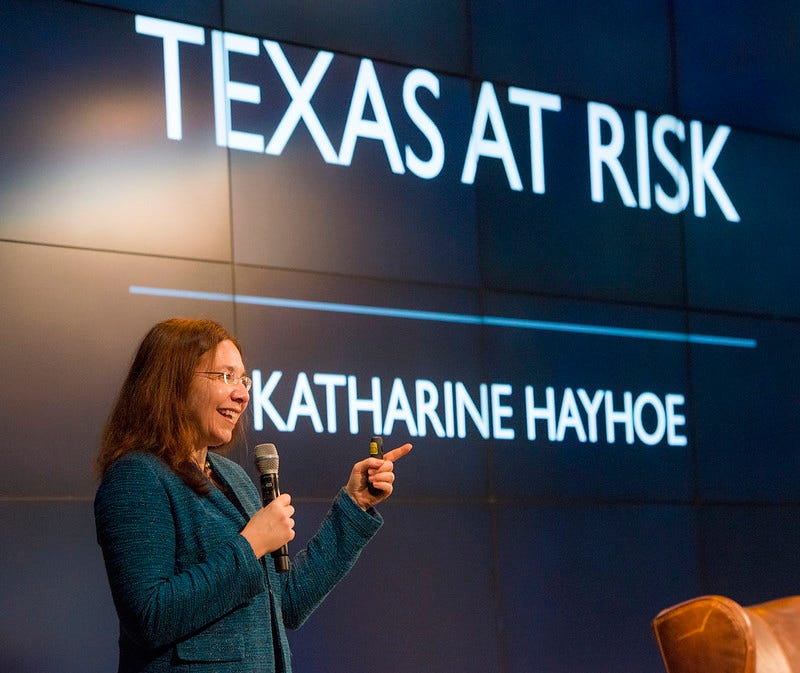As you get this post, I’ll be walking in the Warrumbungles National Park, sans kids and partner :). To be specific, as this post publishes I’ll be on the Mt Exmouth walking track, heading up its 1206 metres to take in this stunning view.
Source: May Fleming DPIE, under Creative Commons licence CC BY-NC 4
In lieu of my regularly fortnightly post, here’s three recent climate posts from three great Substack newsletters I heartily recommend:
Heated
The first Substack I ever subscribed to was Heated, by the unflagging, indefatible Emily Atkin, who has been on the climate news beat since 2013. Emily’s newsletter is devoted to ‘Accountability journalism for the climate crisis’, and she opens her pitch this way:
It is not your fault that the planet is burning. Your air conditioner, your hamburger, your gas-powered car—these aren’t the reasons we only have about a decade to prevent irreversible climate catastrophe.
No; the majority of the blame for the climate emergency lies at the foot of the greedy; the cowardly; the power-hungry; the apathetic. And that’s why I created this newsletter: to expose and explain the forces behind past and present inaction on the most existential threat of our time.
Emily’s post on the recent US Presidential debate sadly has the title ‘Everyone’s head is in the sand’. Here’s a taste of it:
The reason climate change is not a driving force in this election is because powerful people and institutions consistently refuse to talk about the problem with accuracy and appropriate urgency. Last night’s presidential debate on ABC News was a perfect illustration of this.
The moderators—prestigious journalists tasked with the immense responsibility of pressing candidates on the issues most important to Americans—saved climate change for the last possible moment of the 90-minute event, and asked only what the candidates would do to tackle it. And for this incredibly broad and existentially important question, they gave the candidates only one minute each to respond.
Make sure your head isn’t in the sand by subscribing to Heated.
What if we get it right?
Ayana Elizabeth Johnson has only recently joined Substack, and I found her through The Crucial Years newsletter, from Bill McKibben, an amazing climate leader for our times. Ayana has arrived on Substack in time for her upcoming book What If We Get It Right: Visions of Climate Futures, a book with this tag line: ‘Sometimes the bravest thing we can do while facing an existential crisis is imagine life on the other side’. Far out. That just gave me goosebumbs. I’ll be reviewing this book for a future post.
Source: Ryan Lash TED - CC BY-NC-ND 2.0
While we wait for Ayana’s book to come out very soon, check out this extract she published on her Substack, which almost didn’t make the final cut. Just a personal thanks from me Ayana for slipping this back in, despite the protestations of your editor. I wrote recently on how Kim Stanley Robinson’s book Ministry of the Future helped me develop climate resilience, and on this topic, Ayana’s post is an absolute corker.
Ayana is often asked ‘What gives you hope?’. She’s really gives the idea of ‘hope’ a shake-up. After all, she is a marine biologist on top of the latest climate science and what it is projecting for the future:
People often say that hope is important as motivation to address the climate crisis. But I have something to admit: I have a tenuous relationship with hope. I don’t even like the word. It seems so passive, like wishful thinking. Like, “I hope that works out.” Or, “I hope someone does something about that.” And that vibe certainly isn’t going to get us anywhere.
My aversion has been solidified by being asked, ad nauseam, What makes you hopeful? How do you stay optimistic? That always snags me because I am neither. I’m a scientist; I’m a realist. I immediately think: Fuck hope. Where’s the strategy? What are we going to do so that we don’t need hope?
I won’t spoil this brilliant post for you - I just have to say that it makes an incisive distinction between ‘hope’ and another tiny word for a life-sustaining concept to hang onto in the climate crisis.
Talking Climate
I found Katherine Hayhoe’s Substack after asking ChatGPT who I should read on climate. Katherine is a climate scientist and bloody brilliant science communicator, who is ‘explaining and depolarizing climate change’, and describes herself as ‘fact-based, practical and hopeful’. Check out this recent post from her: Finding climate solutions in the dirt. Katherine’s posts typically give readers some of the good climate news, about new solutions being developed or rolled out, before then turning to talk about some of the bad news.
Source: Jay Godwin under Public Domain licence
How about this very interesting idea from a company in Australia she reports on:
And in Australia, a company called Loam Bio is testing using fungus in the soil to take up carbon. Farmers mix in a special powder containing fungal spores as they plant their crops. The fungus helps store more of the carbon the plants absorb, and for longer. Loam Bio has spread its "fungal talcum" on 100,000 acres in Australia in 2024, with another 250,000 acres planned next year, according to the New York Times.
Her newsletter is a great mix of the details, good and bad, about what is happening around the climate crisis. I had to find out about this interesting new innovation happening in my own country by reading her newsletter. Make sure you add Talking Climate to your Substack subscriptions.
I’m back in two weeks. See you then.







Happy walking, looking forward to hearing all about your adventure when you are home.
Enjoy your walk!